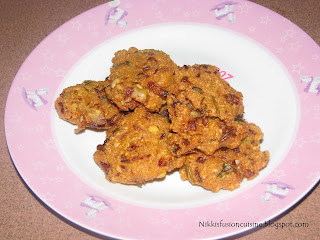All About Gluten
Just 10 years ago, barely anyone knew what the word gluten meant.But now gluten-free diet menus are all the rage, and high-profile stars have been linked to the gluten-free lifestyle, which is said to contribute to increased energy, thinner thighs, and reduced belly bloat.
What is it?
Gluten is a protein found in the grains wheat, barley, and rye. Oats are often included in that list because mainstream oats are contaminated with gluten.Most of us unknowingly love it, because gluten gives our favorite foods that special touch: It makes pizza dough stretchy, gives bread its spongy texture, and is used to thicken sauces and soups.
The next question is why do people eat a gluten-free diet and is it just a fad?
- Celiac disease is an autoimmune disease that is triggered by gluten. To people with this chronic digestive disorder gluten is truly evil: Their bodies regard even a tiny crumb of it as a malicious invader and mount an immune response. Their body attacks the lining of the small intestine which causes both great gastrointestinal distress and nutritional deficiencies. If untreated, these responses can then lead to intestinal cancers as well as complications such as infertility and osteoporosis.
- A gluten-free diet is the only way to treat celiac disease. It is important that people with the disease strictly follow the diet.
- Many parents are finding that children with autism spectrum disorders improve dramatically on a gluten and casein (milk protein) free diet.
Signs of Gluten Sensitivity
- Chronic diarrhea or constipation
- Abdominal pain and bloating
- Unexplained weight loss
- Anemia
- Fatigue
- Infertility
With all the publicity about gluten free, some people have the idea that a gluten-free existence is the ticket to speedy weight loss. But It isn’t. There's nothing magical about a gluten-free diet that's going to help you lose weight." What's really is at work: Gluten-free dining can seriously limit the number of foods you can eat. With fewer choices, you're a lot less likely to overeat.In fact, gluten-free substitutes usually contain more calories.Without gluten to bind food together, food manufacturers often use more fat and sugar to make the product more palatable.Besides,you can end up with serious nutritional deficiencies.In fact, research suggests that those who forgo gluten may be more likely to miss out on important nutrients such as iron, B vitamins, and fiber.
So, If you wanna go Gluten-free,this is where careful meal planning comes in.If you skip the gluten-free goodies and focus on fruits, vegetables, lean protein, dairy, and gluten free grains like amaranth and quinoa, this can be a very healthy way of eating.But you can't just wing it.Below are some Safe and unsafe gluten free products.
Unsafe Grains That Contain Gluten
- Wheat
- Barley
- Rye
GLUTEN FREE FOOD
Safe, Gluten Free Grains
- Amaranth
- Buckwheat
- Corn
- Millet
- Montina® (Indian Rice Grass)
- Oats (Note- The use of oats in gluten free diets is controversial.)
- Quinoa (Keen wah)
- Rice flours- White, Sweet or Sushi, Brown, Wild Rice
- Sorghum
- Teff
Safe, Gluten Free Bean Flours
- Fava bean
- Garbanzo (chickpea)
- Garfava (combination of garbanzo and fava bean flours)
- Pea
- Romano (cranberry)
- Soy
Safe, Gluten Free Nut Flours
- Almond
- Chestnut
- Coconut
- Hazelnut
- Pecan
Safe, Gluten Free Root Vegetable Starches
- Arrowroot
- Potato Starch
- Potato Flour
- Tapioca
Potential Sources of Gluten In Processed Foods and Beverages
Watch for these words on labels. They are a tip-off that the product contains gluten:
- Emulsifiers
- Flavorings
- Hydrolyzed Plant Protein
- Natural Flavorings
- Stabilizers
- Starch
- Baked Bean (Canned)
- Baking Powder
- Beer
- Brown Rice Syrup (May contain malted barley)
- Canned meats and fish in broth
- Caramel Color (Usually corn derived, but check)
- Cheese products- Sauces and some shredded cheeses
- Condiments (Carefully read condiment labels. Gluten is often used as a stabilizer or thickening ingredient in ketchup, mustard and Oriental sauces)
- Deli Meats, breaded fish and meats, pre-packaged ground beef products and hot dogs
- Dextrin (Usually corn derived but always check)
- Dry-roasted nuts
- Flavorings, food starches, seasonings, and malt are general and vague words to watch for on labels of packaged foods. These terms are often clues that the product may contain gluten. For example, "malt" vinegar and "malted" milk powder contain gluten.
- Frozen french fries (In the coating)
- Gravy Products (Dry products, bouillion cubes, and processed, canned products)
- Hydrolyzed Vegetable Protein (HVP) and Texturized Vegetable Protein (TVP)
- Imitation fish, meats and cheeses
- Instant flavored coffee/cocoa mixes
- Licorice candy (black and red)
- Matzo Meal
- Modified Food Starch
- Mono and di-glycerides
- Pickled Products
- Salad Dressings
- Sauces, including soy sauce which is commonly made by fermenting wheat. (Check ALL processed sauce labels- From BBQ sauce to ice cream toppings, chili pepper products and tomato sauce products-all may contain gluten)
- Sausage
- Self-basting poultry products including turkey with added "solutions"
- Snack foods including flavored potato chips and corn chips
- Soups, stocks and broth
- Spice and herb blends (spices and herbs in their natural form do not contain gluten)
- Rice products with seasoning packets
HAPPY GLUTEN-FREE EATING!!! :)
.JPG)

Comments
Post a Comment
Appreciate your Valuable Suggestions